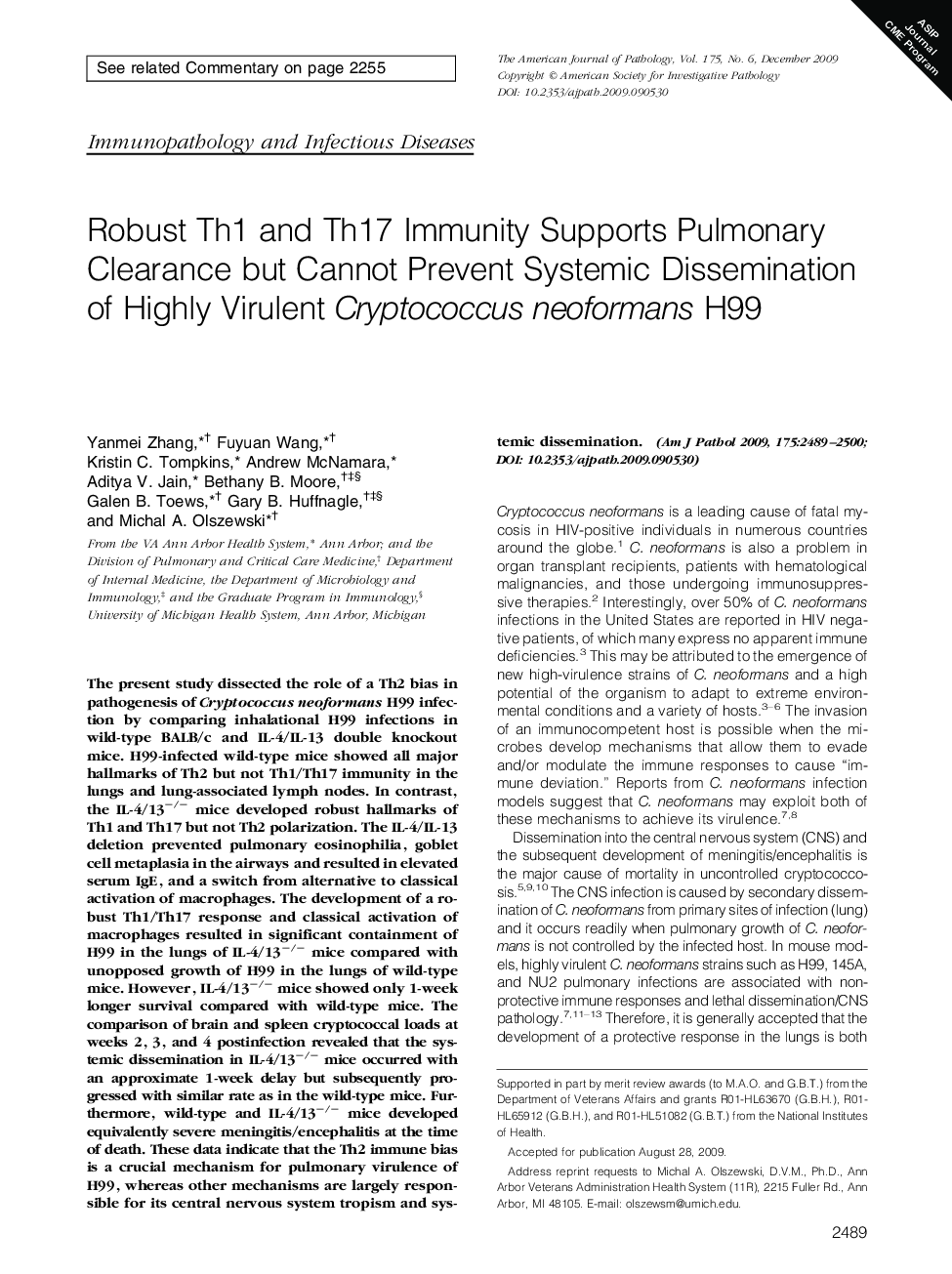| Article ID | Journal | Published Year | Pages | File Type |
|---|---|---|---|---|
| 5936411 | The American Journal of Pathology | 2009 | 12 Pages |
The present study dissected the role of a Th2 bias in pathogenesis of Cryptococcus neoformans H99 infection by comparing inhalational H99 infections in wild-type BALB/c and IL-4/IL-13 double knockout mice. H99-infected wild-type mice showed all major hallmarks of Th2 but not Th1/Th17 immunity in the lungs and lung-associated lymph nodes. In contrast, the IL-4/13â/â mice developed robust hallmarks of Th1 and Th17 but not Th2 polarization. The IL-4/IL-13 deletion prevented pulmonary eosinophilia, goblet cell metaplasia in the airways and resulted in elevated serum IgE, and a switch from alternative to classical activation of macrophages. The development of a robust Th1/Th17 response and classical activation of macrophages resulted in significant containment of H99 in the lungs of IL-4/13â/â mice compared with unopposed growth of H99 in the lungs of wild-type mice. However, IL-4/13â/â mice showed only 1-week longer survival compared with wild-type mice. The comparison of brain and spleen cryptococcal loads at weeks 2, 3, and 4 postinfection revealed that the systemic dissemination in IL-4/13â/â mice occurred with an approximate 1-week delay but subsequently progressed with similar rate as in the wild-type mice. Furthermore, wild-type and IL-4/13â/â mice developed equivalently severe meningitis/encephalitis at the time of death. These data indicate that the Th2 immune bias is a crucial mechanism for pulmonary virulence of H99, whereas other mechanisms are largely responsible for its central nervous system tropism and systemic dissemination.
